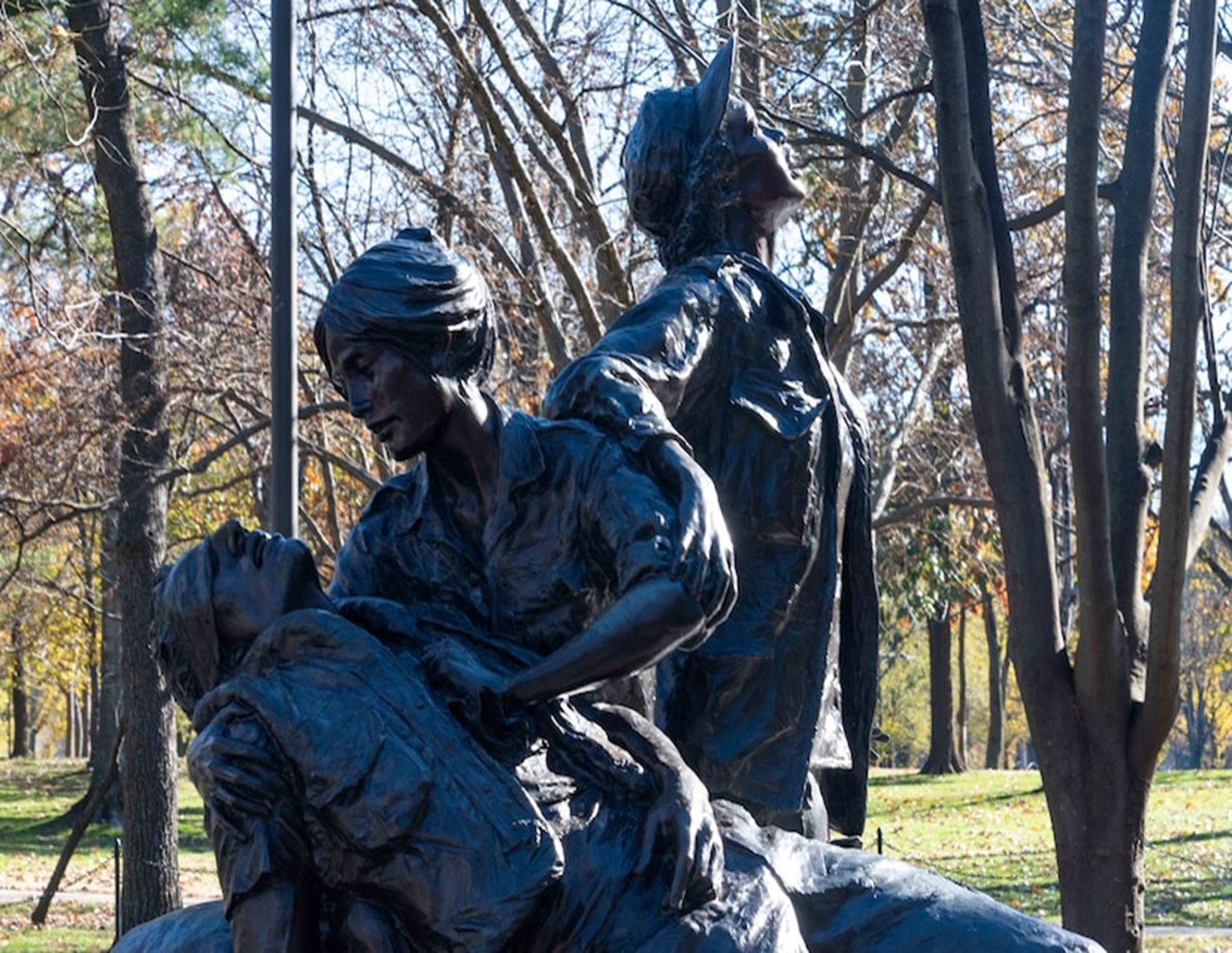
As Veterans Day 2023 draws to a close, it is appropriate to reflect on a special group of brave persons, our women Veterans.
Such is even more fitting as this Veterans Day also happens to be the 30th anniversary of the dedication of the Vietnam Women’s Memorial.
Among the 58,318 names etched into the adjacent Vietnam Veterans Memorial in Washington D.C. are eight names belonging to military women – all nurses – killed during the Vietnam War. An additional 59 civilian women gave their lives in that war.
Standing only 300 feet from the Vietnam Veterans Memorial is the Vietnam Women’s Memorial, the nation’s first—and still its only—memorial to military women on the National Mall. It honors the more than 265,000 military and civilian women who served around the world during the Vietnam era, an estimated 10,000 of them in Vietnam.
Katie Lange, Social Media/Public Affairs Specialist at DoD, has written a great piece shining a “special spotlight… on these women” and on the 10-year quest by Diane Carlson Evans, a captain in the Army Nurse Corps during the Vietnam era, to get a memorial built for female Vietnam veterans.
The following are just some excerpts of her column. To read the entire column, along with some great images, please click HERE. To read more about the Monument, please click HERE.
While women weren’t allowed to serve in combat back then, plenty volunteered for other roles that still saw them deployed to Vietnam and put in harm’s way…
The [Vietnam Women’s Memorial] was the first in the nation’s capital to exclusively recognize the patriotic service of women, both military and civilian.
It took a long time to be realized, though. In fact, the idea for it didn’t even begin to take shape until the Vietnam Veterans Memorial was dedicated in 1982. Diane Carlson Evans, who eventually founded the women’s memorial, made sure she was at that unveiling.
::
…While 90% of the women who served in Vietnam were nurses, many were also in administrative roles, military intelligence or air traffic control. The eight women listed on the Wall were military nurses, but dozens more women died during the war working as civilian war correspondents, photojournalists, humanitarian aids and more.
“If they’re going to have a statue to the men, there has to be one to the women, or they’ll never know we were there,” Evans remembered saying to her husband.
So, she began what turned into a 10-year quest to get a memorial built for female Vietnam veterans. (To put this effort into perspective, the larger memorial, the Wall, took three years.) After years of planning and finding allies to support the cause, Congress approved a site on the National Mall for it in 1988, but the initial design was rejected by the D.C. Commission of Fine Arts, Evans said. So, they held a national open-design competition that received 350 submissions. The design by Glenna Goodacre, a New Mexican sculptor, came out on top. She created the bronze statue that’s now in place depicting three women and a wounded soldier.
“The nurse tending to the wounded soldier directly faces the apex. The standing woman … is facing the [Abraham] Lincoln [Memorial], and the kneeling woman is facing towards the Washington Monument,” Evans explained. “The eight trees that surround this monument represent the eight women whose names are on the Wall.”
She said while the statue depicts nurses, it’s a memorial to honor all women who served.
“There is no rank on the figures. there is no insignia identifying any of them,” Evans said. “We embrace the 265,000 women who served around the world.”
Once it was built, Evans said letters of thanks from servicewomen of the era began to pour in.
::
“They’re just coming out of the woodwork. It’s wonderful. I’m hearing from so many of them that they’re coming in,” she said…
“Some of them went on to become colonels and generals and stayed in the military. Others came out and … changed occupations. They furthered their degrees, and they’ve been contributing to research that’s being done on PTSD and Agent Orange. They’ve fought for legislation for gender-inclusive benefits at VA facilities which were not friendly to women veterans when we came home in the 60s and 70s,” Evans said. “We proved ourselves, and we opened doors for the next generations. Now, the sky’s the limit.”
Evans said she and other female vets will continue to share their legacy “every day until we’re all gone.”
“I want to say how proud I was of the women I served with, and how much we cared for these young men who served during that era,” she continued. “I’m so grateful to all those wounded soldiers in particular who came to stand by our side and support us to help us get that memorial built…They were so appreciative and so grateful.”
















